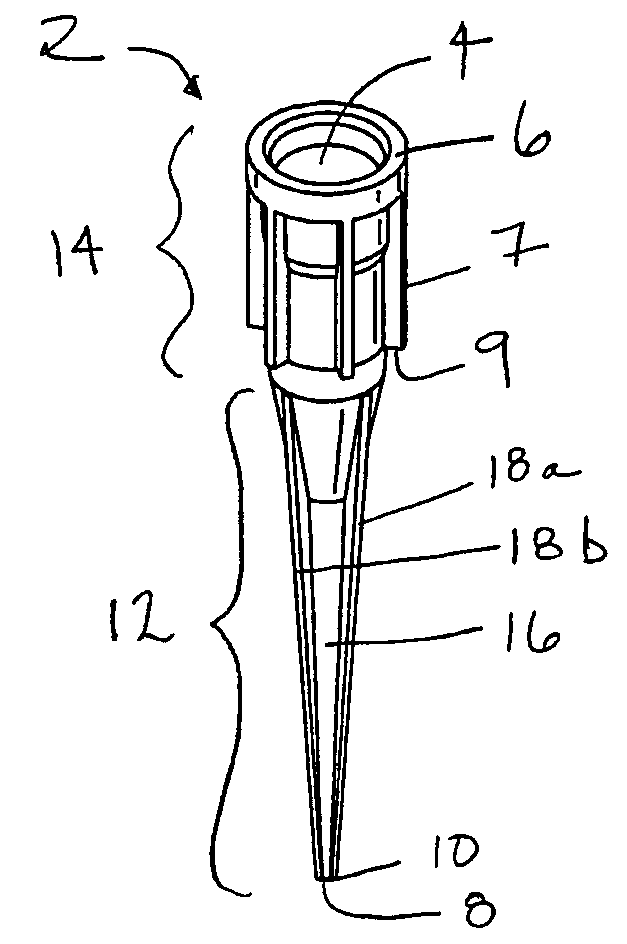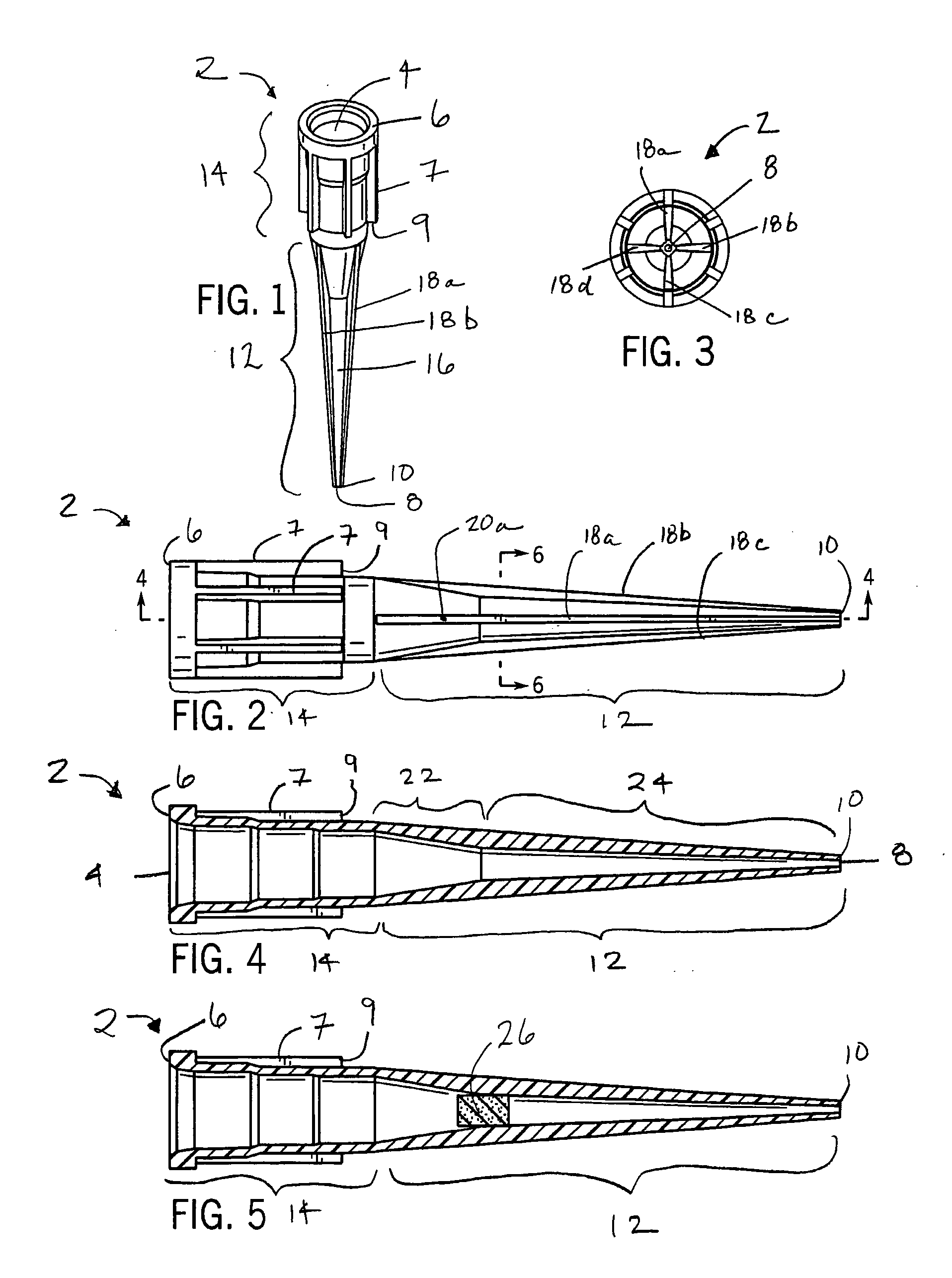Liquid sampling utilizing ribbed pipette tip for barrier penetration
a technology of ribbed pipette and pipette, which is applied in the direction of analytical using chemical indicators, laboratory glassware, instruments, etc., can solve the problems of high cross-contamination concerns, chemical or biohazardous threats, and the result of aerosol spray is often punctured
- Summary
- Abstract
- Description
- Claims
- Application Information
AI Technical Summary
Benefits of technology
Problems solved by technology
Method used
Image
Examples
Embodiment Construction
[0028] With reference to FIGS. 1 through 5, a preferred disposable pipette tip 2 comprises a hollow body having a proximal opening 4 at its proximal end 6 for mounting to a mounting shaft of a pipettor (not shown) or mounting head of an automated liquid handling apparatus (e.g. 46 of FIGS. 9 and 10) The pipette tip 2 further includes a distal opening 8 located a distal end 10 of the pipette tip 2. The distal opening 8 contacts a liquid to be sampled and allows for the liquid to be aspirated into the hollow portion of a barrel 12 of the pipette tip. The pipette 2 includes a collar portion 14 encircling and extending axially from proximal opening 4. Barrel portion 12 axially extends from collar portion 14 to distal opening 10. Preferably, the barrel portion 12 has an outer surface 16 with at least four ribs 18a, 18b, 18c, 18d extending longitudinally along the outer surface 16 of the barrel 12. Each rib 18a-d is circumferentially spaced from one another at a uniform distance. Further,...
PUM
 Login to View More
Login to View More Abstract
Description
Claims
Application Information
 Login to View More
Login to View More - R&D
- Intellectual Property
- Life Sciences
- Materials
- Tech Scout
- Unparalleled Data Quality
- Higher Quality Content
- 60% Fewer Hallucinations
Browse by: Latest US Patents, China's latest patents, Technical Efficacy Thesaurus, Application Domain, Technology Topic, Popular Technical Reports.
© 2025 PatSnap. All rights reserved.Legal|Privacy policy|Modern Slavery Act Transparency Statement|Sitemap|About US| Contact US: help@patsnap.com



